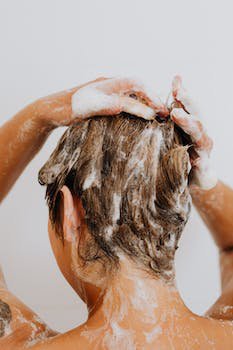1. In Your Shower

Many of us blame the chlorine in our water for the bad condition of our hair. We feel a real difference in texture and moisture when we're on vacation or travelling.
But.. is there really a connection?
Does the bathing water just affect our skin and hair, or can it lead to other health issues? There's more to explore on this topic.
Spend 5 minutes that might change your life’s future health.

How water is treated before it reaches your home.
Water must undergo purification processes before it can be used, whether for drinking or other purposes. These methods typically involve physical, chemical, or biological treatments to remove contaminants. After successful treatment, water can then be recycled for further use.
Appropriately purifying water requires an extensive multistep approach that is usually (but not always) customized to the water source and its degree of impurity. Generally, this involves coagulation and flocculation to remove pollutants and sediment, filtration to eliminate contaminants like sand, gravel, parasites, viruses, and bacteria, and finally, disinfection with chlorine or monochloramine to eliminate any remaining microorganisms. Many places also ‘boost’ water with fluoride.
Chlorine and Human Health
Chlorine is an effective disinfectant for stifling microbes. It's lethal to the cells of these organisms, making it the top pick for water purification. However, while safe and internationally approved rates allow for chlorine to purify water by up to 4mg per liter, this begs the question: what issues can arise from residual chlorine on skin and hair or inhaled chlorine during a shower?
Could there be potential risks?

Chlorine-Caused Skin Problems
Showering with chlorinated water can make some skin conditions, like atopic dermatitis, acne, and psoriasis, much worse.
Chlorine sucks out the skin's moisture, dehydrating it and weakening its protective layer. This puts it at higher risk of getting inflamed or infected. The dryness can also provoke redness and irritation, depending on how sensitive the skin is.
To avoid worsening such skin concerns, it may be worthwhile to switch to filtered shower water.

HAIR PROBLEMS
Chlorine can cause hair and skin to lose their natural moisture levels by absorbing the natural oils that nourish them, leaving free chlorine residue in bathing water. Additionally, chlorine can react chemically with the hair shaft and alter its natural color, resulting in a greenish hue after prolonged exposure to swimming pools.
Our customers regularly call up to tell us of their ‘miraculous’ improvement in hair from straw to lustre.

HEALTH RISKS FOR PREGNANT WOMEN
Research suggests that chlorine byproducts may pose developmental risks to fetuses. A Russian study found that women who drank or bathed in chlorinated water experienced complications during pregnancy, including stillbirth, miscarriage, premature birth, and low birth weight. Newborns exposed to these byproducts were susceptible to a range of birth defects, from nerve damage to weak heart muscles.
While the lack of evidence makes it difficult to draw firm conclusions, it's wise for pregnant women to avoid the potential risks associated with chlorinated water.

HEALTH RISKS FOR CHILDREN
For children, bathing in hot water or bathing in unfiltered municipal water can have serious effects on their normal development. A study was conducted in Belgium to see if there is any association between the chlorine vapors school children inhale in an indoor swimming pool and increased lung permeability and asthma showed that children who frequently played in the pool were more likely to develop asthma compared to other children, and in some cases the symptoms were severe.
In addition to the damage to the epithelial tissue; the tissue that forms the outer layer of the skin and lines the inner tissue of the lungs. This study showed that inhaling chlorine fumes from hot showers that last longer than ten minutes was similarly harmful.
GETTING RID OF CHLORINE IN WATER
Chlorine is a gaseous at room temperature, so getting rid of it can be done simply by keeping the chlorinated water outdoors in a container that allows the chlorine gas to evaporate, heating the water will speed up this process.
However, this method is impractical to get rid of chlorine in large quantities of water. That is why companies like us have developed chlorine-purifying filters that can be used by placing them directly on water pipes.
Here’s a video demonstrating how it works.
Finally, it’s important that we talk briefly about the other contaminants in your water, like chloramines, fluoride, heavy metals, viruses, bacteria and.. and.. and…
But lets get the worst of them, chlorine sorted in your home. AS you investigate our chlorine filter you’ll learn of all of the other contaminants it also removes.
REFERENCES:
Backer LC;Ashley DL;Bonin MA;Cardinali FL;Kieszak SM;Wooten JV; “Household Exposures to Drinking Water Disinfection by-Products: Whole Blood Trihalomethane Levels.” Journal of Exposure Analysis and Environmental Epidemiology, U.S. National Library of Medicine, Aug. 2000, pubmed.ncbi.nlm.nih.gov/10981726/.
Anthony, Kiara. “Keratosis Pilaris (Chicken Skin).” Healthline, Healthline Media, 2 June 2020, www.healthline.com/health/keratosis-pilaris.
“Can Chlorine in Pool Water Cause Hair Loss?” Dr Anthony Farole DMD, Facial and Oral Surgery Center, 9 Dec. 2019, www.drfarole.com/blog/can-chlorine-pool-water-cause-hair-loss/.
Watson, Kathryn. “Keratin: Benefits and Uses for Hair.” Healthline, Healthline Media, 17 Sept. 2018, www.healthline.com/health/keratin.
Bernard, Alfred, et al. “Chlorinated Pool Attendance, Atopy, and the Risk of Asthma during Childhood.” Environmental Health Perspectives, National Institute of Environmental Health Sciences, Oct. 2006, www.ncbi.nlm.nih.gov/pmc/articles/PMC1626429/.

